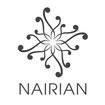Rosehips Don't Lie
The skincare renaissance for the wild roseplant
by Elize Manoukian
Rosehips are one of my family’s best kept wellness secrets. My grandmother kept jars of the dried buds tucked away in our medicine cabinet, considering their contents equal part treatment and ingredient. I remember scrutinizing the mixtures and tonics I would find steeping in giant thermoses on the kitchen counter as she prepared teas and juices, allowing me to develop a taste for the sweet red stain they would become.
Wild rosehip grows abundantly in the Armenian countryside, where she was raised, as it does in parts of California, where I grew up. According to “Armenian Food: Fact, Fiction, and Folklore,” by Irina Petrossian, Armenian grandmothers have long extolled the virtue of masoor (rosehip, in Armenian) for its “concentrated vitamin C, and believe nothing should be added to dilute its pureness.”
After discovering the rosehip renaissance on several different skincare blogs, I started incorporating rosehips back into my daily routine. Every evening, I use rosehip seed oil with a mixture of rose and other essential oils that I’m feeling at the moment to moisturize after double cleansing and toning. I’m one of those people that loves slathering oils and creams on my face whenever I get the chance. Oil from the rosehip plant is light and extremely fluid, which means I can enjoy the satisfaction of allowing the goodness to soak in without worrying about it being too heavy for my combination, perpetually acne-prone skin. Due to its unique composition of fatty acids omega-6 and omega-3, rosehip oil strengthens the skin barrier, protecting it from harmful irritants and acne-causing agents that try to permeate pores.
The seeds of the rosehip produce a gentle oil that is packed with nutrients which make it desirable for use in skincare products. Thanks to its rich content of beta-carotene, an antioxidant which helps protect skin from urban air and environmental damage, and tretinoic acid, a superpower form of Vitamin A that speeds cell turnover without allowing for buildup, rosehip oil is an essential ingredient in products for oily skin, and for reversing aging. Tretinoin, which you might recognize from beauty guru Caroline Hirons’ skincare blog, is frequently found in pharmaceutical treatments for acne and post-acne scarred skin. Tretinoin has been shown to reduce the structural damages of sunlight exposure and partially repair signs of of photoaging, such as wrinkles, pigmentation and solar keratosis.
It’s amazing to me how one plant can create common ground between generations, with its uses evolving and changing as much as we have. At the same time, we return to the products that we know work because we know what they are. After all, when it goes on your skin, it becomes as much of a part of who you are as it is just a product you use. I like to think that somewhere out there, my grandmother would approve.
* * *
Elize Manoukian is a writer and DIY facial aficionado who currently lives in Yerevan, the capital of Armenia. She believes that a small brand is like a family. And for her, Nairian represents the tightly-knit diasporan community that raised her in California. Because she is so close to the action, Elize often visits the Nairian eco-farm, where she takes part in rose harvests, interviews lab and agricultural workers, and unlocks the secrets of Nairian's production. Her favorite product is the Lavender Deodorant.

